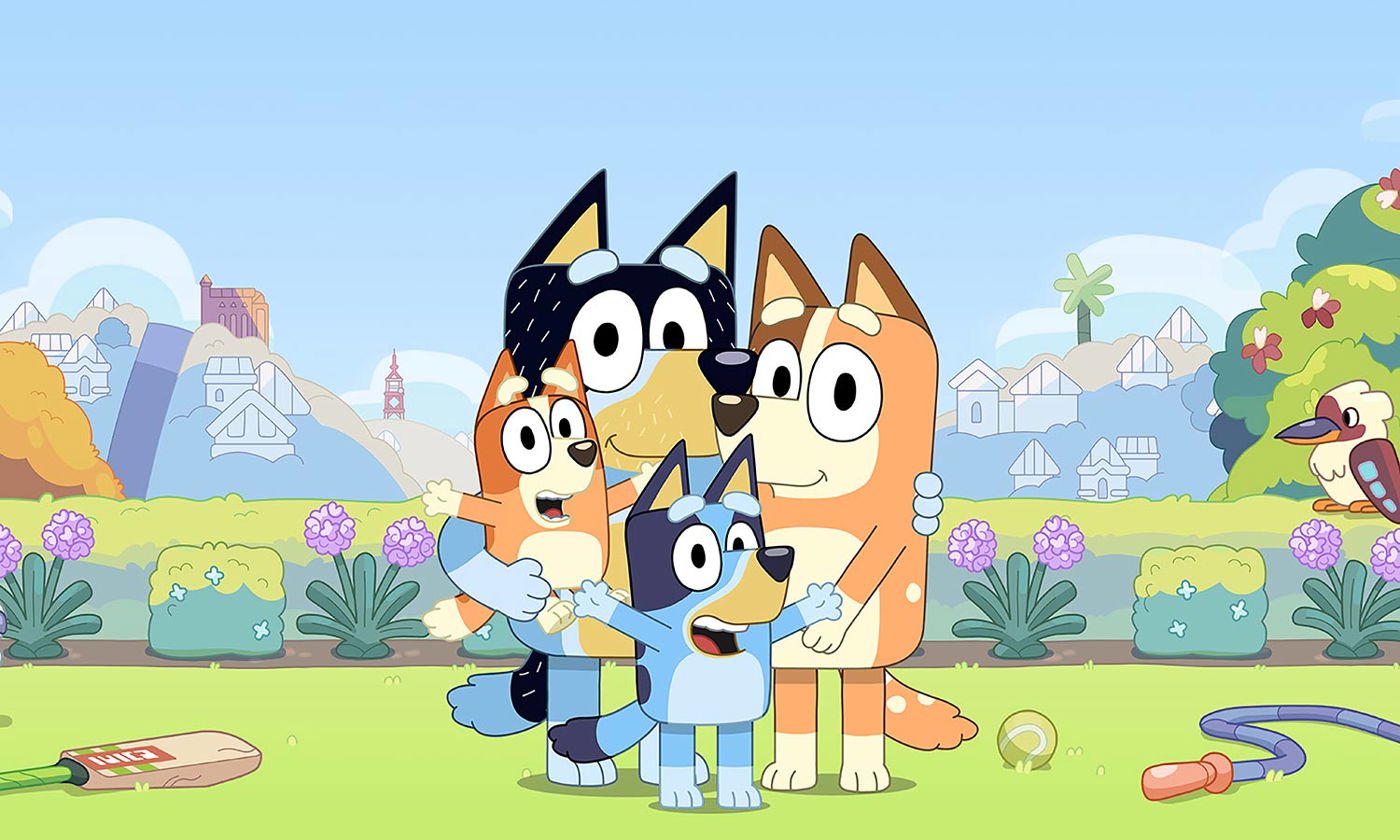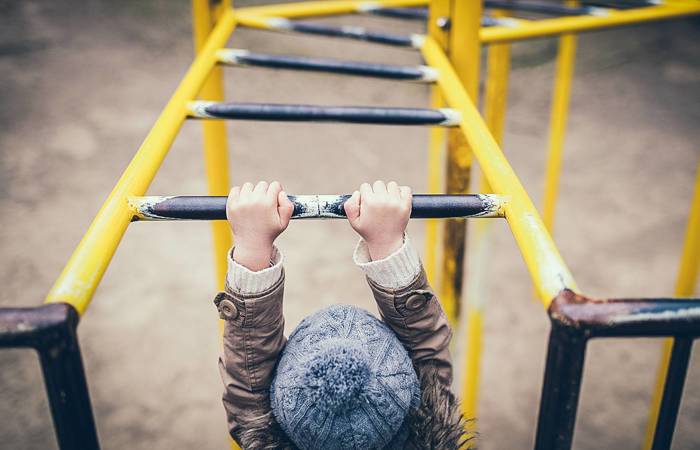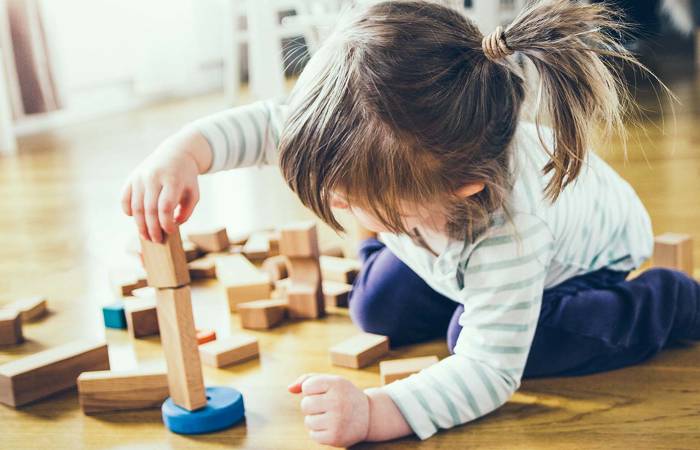Like what you see?
Sign up to receive more free parenting advice.
Thank you for subscribing to our newsletter!
Early Learning

ABC TV
When Joe Brumm was considering ideas for what became the hit ABC television show Bluey, his thoughts kept coming back to a very famous pig.
“I am a big fan of Peppa Pig. That show is supremely British, and given that I am Australian I thought mine needed to be supremely Australian,” says Joe, who created, wrote and directed the Queensland-produced Ludo Studio series.
Since launching late last year, the animated adventures of Bluey the irrepressible six year-old Blue Heeler have become a huge hit with Australian children and their parents.
Joe liked that Peppa Pig depicted a normal family life, without superheroes whizzing across the screen, and he wanted the same for Bluey.
“I think that lets you cut deeper in people’s hearts. It feels more real to me,” he says.
One of Joe’s goals when creating Bluey was to make it a co-viewing experience, where children and their carers could enjoy the program together. He admits that wasn’t always easy.
“It’s obviously difficult when you are trying to bring together four to six-year-olds and 25 to 60-year-olds,” Joe says.
Socio dramatic play is the pinnacle of play for four to six-year olds and it drives the heart of the show. This type of play sees kids working at their highest level of imagination, cooperation and group interaction.Joe Brumm
Stay up to date with the latest news and articles from First Five Years
Thank you for subscribing to our newsletter!
A show for parents and children
Joe believed the key to doing it well was to make the show about children and the world of raising them.
“The best episodes have something in there for the parents and the kids. I never want kids to be scratching their heads and confused. So if we have a theme for the parents, it can’t come at the expense of the kids.
“I first figure out what’s true and put that in the show, but I try to do it in a way that it just hovers in the background for the kids,” Joe says.
A good example is the episode called Takeaway. After a trying experience waiting for delayed spring rolls, and continually trying to stop the children jumping under a leaky tap, the father (Bandit) realises childhood is short and encourages Bluey and her sister Bingo to go for it.
“Children see something in the dad changed: they don’t need to fully grasp that time is fleeting and we all change,” says Joe, noting that parents will likely take that from the storyline.
Joe looked to his own family when developing themes his four to six-year-old audience members would engage with.
“I became very observant about what made my kids laugh. It’s no accident kids laugh at the show: I put in what I knew kids would laugh at,” Joe says.
Play: A vital skill for young children
But behind the laughter Joe uses Bluey to remind both parents and children of what he sees is a vital skill for young children: play.
“Socio dramatic play is the pinnacle of play for four to six-year olds and it drives the heart of the show. This type of play sees kids working at their highest level of imagination, cooperation and group interaction,” Joe says.
“Socio dramatic play is anything where you have more than one child recreating a café, or a shop, or a game that requires them to put some of their needs on hold for the good of the others in the game. It’s the beginning of children moving away from the toddler mindset into the adult world,” Joe says.
The Shadowlands episode, where three young characters work out how to move across a grassy area by only stepping on shadows, is a perfect example.
“They have to figure out what their relationship to rules is and they have to enforce those rules. That’s the beginning of needing to conduct yourself in a social environment and it needs to be learned,” Joe says.
“Research shows that if we let children play like this it teaches them persistence. It prepares their cognitive abilities while it prepares them for a rule-based world.
“In fact, half the time in this episode, it shows the characters discussing the rules and having debates. Then they sort it out together. If they don’t, the game stops. The kids want the game to keep going – so they work it out.”
Joe is frustrated that society stops encouraging this type of process earlier than experts recommend. He believes we should follow the guidance of psychologists who say we should encourage this socio dramatic play until it naturally recedes.
“My experience is we let kids do that to about age four and a half, and then it stops. The longer we encourage them to do it, the better off they will be,” Joe says.
Joe admits that in Bluey, the ‘condensed timeframes’ children see on a screen can also bring some challenges for young children.
“When Bluey goes to the creek, in seven minutes she sees tadpoles, dragonflies and wallabies. It does encourage kids to think the world will provide that level of hyper reality. They have to train themselves to work at the real pace of nature,” Joe says.
Reflecting Australian life and language
While much has been made of Bluey’s ‘Australian’ ness – and Joe does like the very Australian nature of the language in the show – he says it came about more due to him writing what felt real than an attempt to make a statement so local children could hear their words and accents reflected on screen.
Still, he does enjoy the way that many Australian parents relate to the tone in which the show is delivered.
“You have to write what feels good and normal to you. It’s our way of expressing tenderness when parents call their child ‘mate’ or ‘kid’,” he says.
Launched in October 2018, Bluey loves to play and turns everyday family life into extraordinary adventures, developing her imagination as well as her mental, physical and emotional resilience.
Each episode may be just seven minutes long, but the process behind the series is significant.
The series was almost three years in the making, and once production began each of the 52 episodes went through a five or six-month iteration moving from idea to completion.
“There are around 15 different stages that include animators, designers, storyboarding, artists and musicians touching it: we have about 50 people in-house working on Bluey. We start that assembly line with a new episode each week, so in the middle of production there are 15 or 16 episodes all at various stages,” Joe says.
Despite the success of Bluey, and the fact that hype has already begun about a second season of the show, Joe still believes children do better when they get outside and run around rather than watching too much television.
“But most parents, like me, are simply doing their best: some time outdoors and some television is a reasonable balance,” Joe says.







